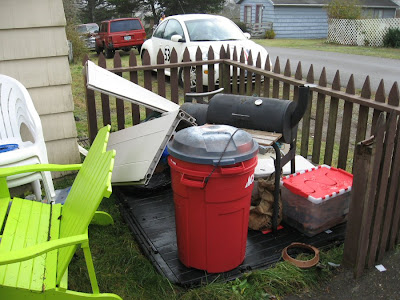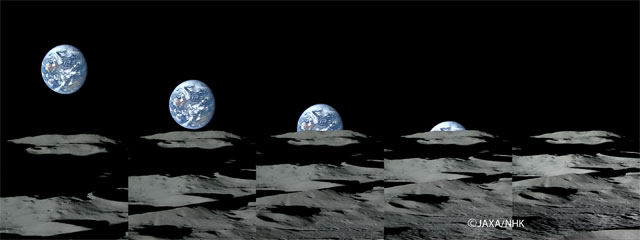
Forgive me. I have done a Geek thing. I installed Linux on one of my computers here last night, and I'm here to share the tale.
This is a big thing. I'm a writer, and computers are (following in importance perhaps only the English language, a tool I frequently and shamelessly abuse) one of my primary tools. I rely on them not only for word processing, but for business communication (email), project delivery (email again), research (very,
very important), record keeping, promotion, tax preparation, almost everything to do with my web comic Minions at Work (except the Minions themselves) and that's just for starters.
There was a time that was pretty simple. Chris and I shared one computer back in the day (though that was before she started writing seriously), first CP/M (remember CP/M? No? I guess I am getting old...) then later MS-DOS, and then Windows. Everything, including the early Windows computers didn't require much upkeep. You installed software once (if it wasn't already installed on the machine when you got it) and forgot about it.
But upkeep has become and increasing burden. Software updates come weekly now, often whether you want them or not. Windows updates itself. So does the Norton security software. But there there's the browser, the media players, the browser plug-ins, all the Microsoft Office programs, all downloading, installing, hogging the computer's resources in the process, usually wanting to reboot when it's least convenient, and often causing other problems in the process. Each of these updates, we are assured is important, even vital. Most cover security issues, and we all know the threats are real. Despite all of this, my computer, probably the best-maintained machine in the place, still managed to get infected with adware a few weeks ago.
And it isn't just one machine. Oh, no. There are just two of us here in the house, Chris and I, but we have a bunch of computers. Four working desktops at the moment, and I think three laptops. There are computers in each office, a computer in the guest-room (which is also a backup), another desktop that may serve as a backup or a file server in the near future, a main laptop, and a couple of older machines as backup for that.
All of these are Win-boxes, all in need of constant care and feeding that some of them just don't get. I'm mostly the IT guy here, and I don't do nearly enough. Plus, all of them need security software, and that needs to be replaced, at considerable expense, annually. Worse, some of the older machines are still running Windows 98, which is no longer supported by Microsoft, and worse, by Norton, so there are suddenly these unsecured computers on my network, infrequently used, but still inviting trouble.
Something has to give. I'm tired of the update treadmill, and while lots of the old hardware we have here just keeps chugging along, its the software that wears out, and it matters not how little we use it. Turn on a computer you haven't used in six months, you still need six months worth of updates, if you can even get them.
"So," I can hear many of you saying, "you really need to get a Macintosh." Some of my best friends are Mac people, and I hear plenty of this in lunch and diner conversation.
Nope. I can tell you right now, I'm not going there. It isn't that I don't think Apple products are good.
Most of them are. And they do solve a lot of problems in the short-term. Mainly it's that I'm of the unshakable opinion that Apple is an
evil company. Now, sure, Microsoft is evil too. But
everybody knows it, including all their customers and even their most loyal supporters. Microsoft doesn't even flat-out deny it, though they dance around the subject.
But my Apple friends are in blissful denial about the evil that is Apple. Apple is arrogant, monopolistic, anti-competitive, and most disturbing for me as a writer, seeking to establish a stranglehold over the distribution of intellectual property and then lock it into their hardware.
Making them, I guess, not much worse than any other large corporation. But what really disturbs me is the response of their average customer, which seems to be, "please, sir, may we have some more?" I'll consider putting a Mac on my desk the day I can buy a song from iTunes and put it on my Creative media player.
Which is not a blanket condemnation of Apple products or customers. Some of you know the devil you're dancing with, and that's fine. And there are plenty of people who, at this point, probably should never buy any computer other than a Macintosh. They're great for people with minimal technical aptitude and little time to fiddle, and who just need a smooth, easy, reliable computer experience at any price.
In fact, listening to my mom struggling (she lives diagonally across the country from me, with one phone line and a slow dial-up connection, so there isn't much I can do directly to help) to update to a new version of Norton, I found myself
really wishing I'd told her to buy a Mac when she replaced her last PC. It would have required her to relearn a lot of things, but I think she could have managed it, and staying secure and stable using a dial-up connection would have been much less of an issue.
But there are unlikely to be any Macs in this house any time soon. We shall not speak of it again.
Up until recently I told myself that as long as I kept our primary hardware and software reasonably current, the problem would stay under control. The problems came only when we let things (like Windows 98) fall too far behind the technology curve. But due to a hardware failure, we recently replaced Chris' computer with a new Dell and Windows Vista.
You know Vista, the operating system that's supposed to be all stable and secure? Well, bloated and annoying seems to be more the case. I haven't been exposed to it much, and Chris' seems satisfied enough with her machine at the moment, but I've seen enough to suspect that it's just a continuation of the problem (and buying deeper into the Microsoft evil) rather than a solution, and it's no solution at all for our older machines. Even if they'd run Vista, it's just too damned expensive, difficult, and risky to update.
And one thing that has increasingly bothered me about both Apple and Microsoft is how much you no longer own the technology, it owns you. Look at the Apple customers who unlocked their iPhones (that probably never should have been locked in the first place) only to have them turned into "iBricks" at Apple's earliest convenience. Look at Microsoft's "Genuine Advantage," a bit of spyware that assumes your copy of Windows is pirated until proven otherwise, and then subjects your computer to a cavity search
every time you want even the most minimal support, and which has already locked down the computers of countless owners of legal and legitimate Windows installations.
Ever notice how every new piece of software, and many of those countless updates, comes with a new terms-of-service agreement? Do you read them before clicking the accept button? Of course not. Nobody does. Would you understand them if you did? Unless you're a lawyer, no, and possibly not even then. These guys have their hooks into us, and they keep reeling in the line. It's not only infuriating and insulting, it's frightening, considering how much of our modern world depends on one of those two technology companies.

Which, along with other things, has had me thinking about Linux for a while. Based on internet and media chatter, it sounded appealing. A free, secure, stable operating system that operates on an open-source license that won't make you an indentured servant to Bill Gates or Steve Jobs. Plus, plenty of free software to choose from. In fact, it sounds almost too good to be true, which always makes me
suspicious. So, I keep hearing good buzz, but my last exposure to Unix-like operating systems was back in the command-line-driven days. I used command-line operating systems (MS-DOS, the afore-mentioned CP/M, and a variety of other early personal computer DOSes) for years, but I had no desire to learn another one.
Oh, sure, I knew there were graphical, windowing shells, but I was put off by the idea that there would be a technically complicated installation process. But more recently, the buzz has been that Linux is nearly ready for the mainstream, that there were versions that featured clean, automated installations and refined interfaces that hid most of the geeky stuff from the user. But (this is another thing I dislike about the Mac) all the geek stuff is still there. If you need to, or if you want to, you can "pop the hood" and poke around in the guts of the system at any time. I like that, even if I never have to use it.
Finally, the Linux guys had me intrigued enough to do something. The old Compaq in the guest-room hadn't been turned on in months, and its outdated Norton and Windows 98 operating system had turned it into a critical security issue if I ever did need to use it. It really didn't have any data on it that I was worried about losing, and if the installation failed, it really wasn't going to become much less useful than it already way. It was too old to bother with any significant hardware upgrades, and Chris' old Dell (running still-maintainable Windows XP) was probably going to replace it as soon as I got around to replacing a fried hard-drive.
Given that there wasn't a lot to lose, I really didn't sweat a lot over which of the zillion versions of Linux to download. My research mostly consisted of looking up Linux on the-often-unreliable-Wikipedia and looking for buzz-phrases like "stable" and "user-friendly installation." I finally decided to try
Ubuntu, since it was based on Debian (which I'd heard of) only supposedly with more emphasis on usability. Also, you could supposedly try it without actually installing it by creating a bootable Ubuntu CD-ROM.
This wasn't very successful for me. First, I found the slowest server in the world (despite the fact that it's located only a few hundred miles from me) to download the 600+ megabyte disk image from. Then, when I tried to run it on the Compaq, it would grind on for a long time, display some pretty logos, then crash down to a command line where I was utterly lost.

To be fair, this is probably the fault of my old and eccentric hardware, and I never actually tried to install Ubuntu, just run it from the CD-ROM. Your experience may be much different. However, rather than dink with it, I decided to try another implementation. I decided to try
Debian itself, as it had been praised by at least one Linux-user I'd talked directly to.
Debian didn't offer the "run from CD-ROM" option, but they did offer a "net installation" CD-ROM image that was much smaller (about 140 megs, I think). It required the target machine to have a high-speed Internet connection during the installation, but I had that covered. I downloaded the disk image file onto our primary laptop, along with a free disk-burning program the Debian folks recommended. This latter program allowed me to turn the disk image into a bootable installation CD-ROM, and it ran without a hitch.
I put the disk in the Compaq, turned it on, and watched it go. I was expecting problems, as I hadn't bothered to even investigate Linux drivers for the machine or any of its components (network card, graphics card, printer, sound-card, etc.).
The installer is text-based and pretty simple. If you're installing it as the only OS on a machine with no existing data on the hard disk you need to save, you shouldn't have to tell it much more than "go." I, however, wanted to try and preserve a Windows partition so I could keep that as a backup in the installation failed.
The installer included some pretty slick partitioning software, so I repartitioned the old 10 gig drive to allow a minimal 2 gigs for the Linux installation. I knew that Linux was supposed to be much more efficient than Windows, but this was only a blind guess. The installer automatically divided this up into two partitions, one for the installation, and a smaller one for swap files.
Let me stress that this is technical crap that you can avoid by just allowing Linux to completely take over the system, or at least a particular drive. I made things harder for myself than they needed to be.
The installation took quite a while, though it was no more long or troublesome than any of the many Windows installations I've been through. In fact, it was easier in that I never had to swap disks. Debian pulled everything it needed off the Internet.
Problem was, my first attempt at installation failed. It told me
where it failed, in the process of installing application software, but it told me nothing at all about why. Now, it appears that at the point of failure, Linux itself had already installed just fine. I soft landed in a text menu of the install program, and it encouraged me to repeat the process manually, hopeful that it would somehow work the second time. But, it didn't, and neither did the following process, which was to set up the operating system to boot. Again, no information on why, not even a cryptic error code or number.
But I had a guess, which I suspect was probably right. I think it ran out of disk space. I restarted the process, partitioned the disk to give 3-gigs total to Linux, and tried again. It went through the process this time without a hitch. There were a couple of questions and prompts along the way that gave me pause, and might have sent a less technically savvy user into a panic. I had to come up with passwords (both an individual password, and an administrator password), an individual user name. I had to give the computer a name, and a domain name (not much of an issue unless, like me, you're trying to make it talk to an existing network of computers at your location).
But for the most part, it worked in an almost magical way. In any given Windows installation I've done, I've needed at some point to track down one (or more often many) hardware driver disks or track them down on web-sites. Here, it never happened. The installer seems to have recognized all my hardware and found the appropriate drivers on its own.
The moment of truth arrives. Following the prompts, I take out the CD-ROM and reboot the computer. It works! I have my first real look at Debian Linux!

In some ways, it's almost disappointingly familiar. It looks a lot like Windows, and most of the differences are pretty self-explanatory. I had no trouble finding and running applications, and navigating the files. It's slick, modern, and mouse driven. Oh, maybe the look isn't quite as sophisticated as a current version Windows or the Mac OS, but that's mostly window-dressing (no pun intended). If you've used either of those computers for a few years, you shouldn't have a bit of trouble here.
In terms of performance, it seemed fine, despite the old, slow, hardware and the minimal disk space I allowed it to have. (I'm sure that, like most operating systems, it would have run better with a faster processor, more memory, and more, faster, disk-space. On a even vaguely modern computer it seems to me that it would fairly scream, especially when compared to a resource-pig like Vista)
Did I say applications? Yes I did. One of the nifty things about these more user-friendly versions of Linux is that they give you the option of pre-installing software packages based on how you plan to use the computer. Debian gave me a
lot of goodies to play with right out of the box. (Wait, there was no box! My bad!) First, there was an email program, several web-browers, and a BitTorrent-type file-sharing program. There was a whole list of mini-games of the sort that come with most Windows and Mac boxes (solitaire, blackjack, a mine game, a Tetris clone, and other time-wasters. There were video players, music players (for these latter two you'll probably need to download some decoders elsewhere, as these contain proprietary technology, and the Debian package includes only "open-source" software), picture viewers, and what is supposed to be a powerful PhotoShop clone.
Best of all, unlike most Windows computers you can buy, none of this is nag-ware, share-ware, spy-ware, ad-ware, cripple-ware, or any other flavor of no-ware. This is all full version, fully functional, no-strings-attached stuff.
And most importantly for the writer, it includes the open-source Microsoft Office clone, Open Office. I really haven't done much more than open this and poke around, but it looks fine for what most of us do. All the familiar formatting and editing tools seem to be there, and it reads and writes to all but maybe the very newest Microsoft Office formats (when submitting electronically, I always drop back to an older MS Office format anyway, as it avoids all sorts of potential compatibility problems). Moreover, it fully supports the "Open Office" formats which may better allow your documents to be used around the world.
It's really going to take a lot of use and transferring files back and forth with Microsoft systems to see if this is
really ready for prime time as a professional writer's tool, but what I've seen so far is encouraging.
There's plenty of other Linux software out there too, much of it free and open-source. Are you going to be able to use your familiar applications on Linux? Quite likely not, but for the most common tasks, you'll probably find something similar, just about as good, and best of all, free.
This is an ongoing story. I doubt this is the last Linux installation I'll be doing here. One of the older laptops will probably be the next Guinea pig, and at some point, I might try to set up on one of the backup boxes as a file server for backups. For the foreseeable future, our two primary computers will probably still run some version of Windows. But I could at least imagine a day when the primary machines might at least be able to book Linux, and when maybe it might be just a backup computer running Windows, for those few instances when nothing else will do).
Is Linux ready for prime time? Should you consider it? My answer at this point is a definite "maybe." Installation still seems the greatest sticking point. Your installation could be great, and probably will be, but things will occasionally go wrong, and when they do, you could be on your own. Telephone or in-person access to an experienced Linux user is still probably a plus.
However, you can avoid this completely by buying a computer with Linux already installed. That's now an option, from major players like Dell, down to such mundane sources as Wal-Mart. As a bonus, you're likely to pay considerably less than for an equivalent Windows machine.
I still don't think this is for everybody, and I'll really have to pound on Open Office before I'm ready to sign-off on it. And like Mac users, Linux users are always going to find themselves facing programs they can't run, hardware they can't use, and things they can't do. It goes with the territory.
But it's at least now I see Linux as a viable option, if not for your primary computer, then maybe for your laptop or backup machine. It has many of the security advantages of a Mac, the openness (only better) of a Windows machine, and its cheap and friendly to any older hardware you may have laying around in the closet.
I'll continue to report our experiences, but if you're brave enough, and especially of you have a spare computer taking up storage space, go ahead, give it a try...




































